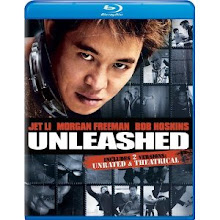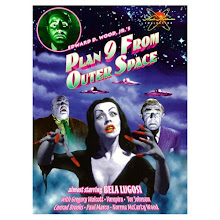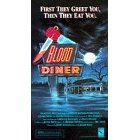by Jason Pyles / August 25, 2009
It might seem like cheating to discuss them simultaneously, but here is a compare-and-contrast review of “Malibou’s Most Wanted” (2003), “Harley Davidson and the Marlboro Man” (1991) and “Urban Menace” (1999).
First, a preface: This “worst movie series” (my dumb idea that nearly killed this blog if it weren’t for Andy), had a noble objective: In the quest for understanding what constitutes cinematic greatness, I was hoping a look at several bad movies would enable us to identify what makes terrible films so terrible. By contrast, one then should, theoretically, be able to gain insights into defining filmic excellence.
For me, the chasm between awful movies and exceptional ones has been made deeper and wider, thanks to this exercise. But even though I can blatantly perceive it, I’m just not sure that it has helped me to articulate such vast disparity any more clearly.
However, I noticed the distance between the quality of “Malibou,” “Marlboro” and “Urban” is much closer than the distance between these and any “excellent” film, so I find the differences easier to describe.
“Malibou” and “Marlboro” — ridiculous as they are — both have a story; whereas, “Urban’s” feeble narrative is so faint, it barely exists. No doubt, the budget for “Malibou” and “Marlboro” was comparable, while “Urban” obviously had no budget.
“Urban Menace,” a straight-to-video release, is a prime example of what happens when people who evidently know very little about filmmaking attempt to make a movie. A quick glance at the filmography of its creators, however, reveals some surprises, because these seemingly ignorant filmmakers should know better:
For instance, “Urban’s” director, Albert Pyun, has 45 directing credits to his name, according to the Internet Movie Database. You’d think that after 34 previous projects, even if he learned nothing technical about his trade, he’d have some instinct about which projects to reject. “Urban’s” production designer, Nenad Pecur, did some art direction for “Hannibal Rising,” “EuroTrip,” “The Pianist” and “Behind Enemy Lines,” so the only explanation seems to be that limited funding hindered Pecur.
As for its writers, Hannah Blue only has three other writing credits, Andrew Markell has only one other credit, and the third writer, Tim Story, who has only one other writing credit, also directed both “Fantastic Four” movies, which explains a lot. I’m not trying to be unfairly vicious, but “Urban’s” 72-minute runtime feels lengthy (even longer than the first “Fantastic Four”).
I’m not trying to personally attack (or wholly blame) these five filmmakers, because even after taking the auteur theory into favorable consideration, filmmaking is still a collaborative art. Many people own the shame that is “Urban Menace.” And that’s fine. Bad movies will be made, in order to get the great movies. If you want an omelet, you have to break a few eggs. “Urban Menace” is thoroughly broken.
Because my comments are becoming long-winded, I’ll wrap up by saying “Malibou’s Most Wanted” made me chuckle a few times. It was no more reprehensible than any other Saturday Night Live skit unwisely stretched into a feature film. “Malibou’s” greatest offenses were the instances when a couple of its actors over-extended the parody. These awkward moments produce that bizarre phenomenon where we, the viewer, inexplicably feel embarrassed.
“Marlboro Man” was mildly entertaining as a buddy-adventure-action movie, something akin to early ‘80s primetime TV, like “The Dukes of Hazzard” or “The A-Team.” I guess if I had a gun to my head, I’d say “Malibou” is the funniest, “Marlboro” is the most entertaining, and “Urban” is the worst of our series — thus far. I still need to watch Ed Wood’s “Plan 9 From Outerspace” (1959) next, which is notorious for its legendary badness — often called “THE worst movie of all time.” I’ll return soon with my final verdict.






























































No comments:
Post a Comment